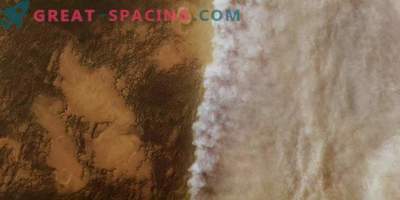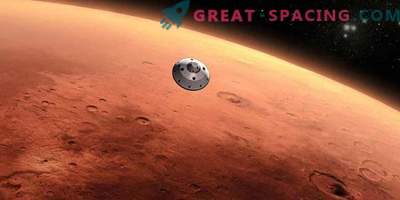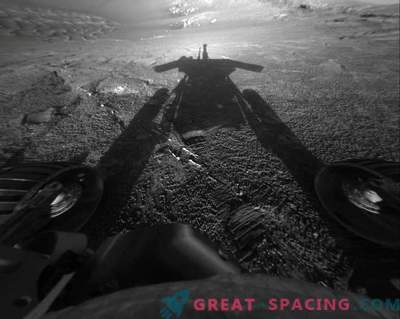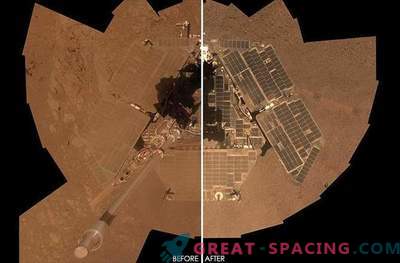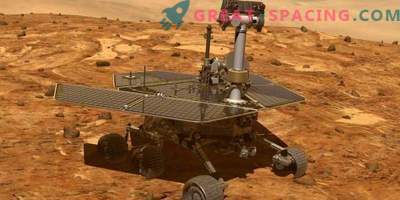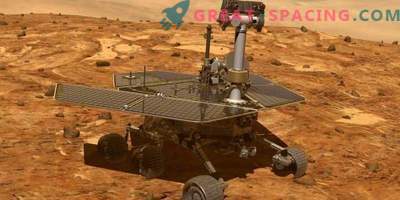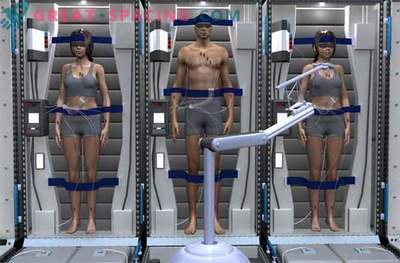
Opportunity in the Martian crater
NASA's rover on Mars was silent because a large-scale dust storm enveloped the planet and eclipsed the sun. On Tuesday, the controllers tried to contact the device, but the rover was silent. The storm has been rising since the end of May and now covers a quarter of the Red Planet.
It is reported that a few more days will pass before enough sunlight appears to charge the Opportunity solar panels. In 2003, a similar situation occurred with the Spirit rover, who studied the Martian rock and soil. Then the unit failed for several years.
90 Day Mission
Opportunity landed on the Red Planet in 2003, a year after the Spirit, to look for signs of a past life. Initially, the mission was designed for only 90 days. Rover made a number of discoveries, including evidence that once at least part of Mars remained wet for a long period of time and that such conditions could be livable.
When the storm began, Opportunity was located near the canal carved on the edge of the crater. He was trying to understand whether it could be created by the flow of water, wind erosion or something else. Partner Spirit was stuck in soft soil in 2009 and the mission was officially stopped in 2011. Scientists hope that Opportunity will return to work, because the Martian summer is coming. That is, the temperature of the rover should not fall below the minimum working in -55 ° C. Dust accumulates in a thin layer, so there is no threat of “burial” of the device.
Rover Opportunity will remain in sleep mode until it receives enough energy to charge the battery.
Sandstorms
Opportunity overcame 45 km on the Martian surface. In 2007, he experienced a severe dust storm. On the Red Planet, such events are easier to form due to the thin atmospheric layer. Can last from several weeks to months.
The new Curiosity rover is now on the other side of the planet, where the sky is just beginning to darken from the storm. But at NASA, there is still no concern, because the device, landed on the planet in 2012, is also endowed with nuclear power.
Experts also believe that the storm should not interfere with NASA's InSight mission, which started earlier this year. In November, the landing is planned and the device will begin to study the Martian shocks. Scientists are closely watching dust storms on Mars to learn how to make more accurate predictions.





